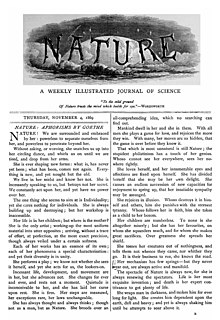
The geologic time scale (GTS) is a system of chronological dating that relates geological strata (stratigraphy) to time. It is used by geologists, paleontologists, and other Earth scientists to describe the timing and relationships of events that have occurred during Earth's history. The table of geologic time spans, presented here, agree with the nomenclature, dates and standard color codes set forth by the International Commission on Stratigraphy (ICS).

The Holocene is the current geological epoch. It began approximately 11,650 cal years before present, after the last glacial period, which concluded with the Holocene glacial retreat. The Holocene and the preceding Pleistocene together form the Quaternary period. The Holocene has been identified with the current warm period, known as MIS 1. It is considered by some to be an interglacial period within the Pleistocene Epoch.
The Mississippian is a subperiod in the geologic timescale or a subsystem of the geologic record. It is the earliest/lowermost of two subperiods of the Carboniferous period lasting from roughly 358.9 to 323.2 million years ago. As with most other geochronologic units, the rock beds that define the Mississippian are well identified, but the exact start and end dates are uncertain by a few million years. The Mississippian is so named because rocks with this age are exposed in the Mississippi River valley.
Tertiary is a widely used, but obsolete term for the geologic period from 66 million to 2.6 million years ago. The period began with the demise of the non-avian dinosaurs in the Cretaceous–Paleogene extinction event, at the start of the Cenozoic Era, and extended to the beginning of the Quaternary glaciation at the end of the Pliocene Epoch. The time span covered by the Tertiary has no exact equivalent in the current geologic time system, but it is essentially the merged Paleogene and Neogene periods, which are informally called the Lower Tertiary and the Upper Tertiary, respectively.

A formation or geological formation is the fundamental unit of lithostratigraphy. A formation consists of a certain amount of rock strata that have a comparable lithology, facies or other similar properties. Formations are not defined by the thickness of their rock strata; therefore the thickness of different formations can vary widely.
The International Commission on Stratigraphy (ICS), sometimes referred to by the unofficial name "International Stratigraphic Commission" is a daughter or major subcommittee grade scientific daughter organization that concerns itself with stratigraphical, geological, and geochronological matters on a global scale.
A stratigraphic unit is a volume of rock of identifiable origin and relative age range that is defined by the distinctive and dominant, easily mapped and recognizable petrographic, lithologic or paleontologic features (facies) that characterize it.
In the geological timescale, the Tithonian is the latest age of the Late Jurassic epoch or the uppermost stage of the Upper Jurassic series. It spans the time between 152.1 ± 4 Ma and 145.0 ± 4 Ma. It is preceded by the Kimmeridgian and followed by the Berriasian stage.
The Cisuralian is the first series/epoch of the Permian. The Cisuralian was preceded by the Pennsylvanian and followed by the Guadalupian. The Cisuralian Epoch is named after the western slopes of the Ural Mountains in Russia and Kazakhstan and dates between 298.9 ± 0.15 – 272.3 ± 0.5 Mya.
The Lopingian is the uppermost series/last epoch of the Permian. It is the last epoch of the Paleozoic. The Lopingian was preceded by the Guadalupian and followed by the Early Triassic.
The Middle Pleistocene is a subdivision of the Pleistocene Epoch, from 781,000 to 126,000 years ago. It is preceded by the Calabrian stage, beginning with the Brunhes–Matuyama reversal, and succeeded by the Tarantian stage, taken as beginning with the last interglacial.
The Rupelian is, in the geologic timescale, the older of two ages or the lower of two stages of the Oligocene epoch/series. It spans the time between 33.9 and28.1 Ma. It is preceded by the Priabonian stage and is followed by the Chattian stage.
The Chattian is, in the geologic timescale, the younger of two ages or upper of two stages of the Oligocene epoch/series. It spans the time between 28.1 and23.03 Ma. The Chattian is preceded by the Rupelian and is followed by the Aquitanian.
In the geologic timescale, the Kimmeridgian is an age or stage in the Late or Upper Jurassic epoch or series. It spans the time between 157.3 ± 1.0 Ma and 152.1 ± 0.9 Ma. The Kimmeridgian follows the Oxfordian and precedes the Tithonian.
The Serpukhovian is in the ICS geologic timescale the uppermost stage or youngest age of the Mississippian, the lower subsystem of the Carboniferous. The Serpukhovian age lasted from 330.9 Ma to 323.2 Ma. It is preceded by the Visean and is followed by the Bashkirian.
Chronostratigraphy is the branch of stratigraphy that studies the age of rock strata in relation to time.
Chronozone or chron is a term used for a time interval in chronostratigraphy, defined by events such as geomagnetic reversals (magnetozones), or based on the presence of specific fossils . According to the International Commission on Stratigraphy, the term "chronozone" refers to the rocks formed during a particular time period, while "chron" refers to that time period.
A group in stratigraphy is a lithostratigraphic unit, a part of the geologic record or rock column that consists of defined rock strata. Groups are generally divided into individual formations. Groups may sometimes be divided into "subgroups" and are themselves sometimes grouped into "supergroups".
A geological period is one of the several subdivisions of geologic time enabling cross-referencing of rocks and geologic events from place to place.





